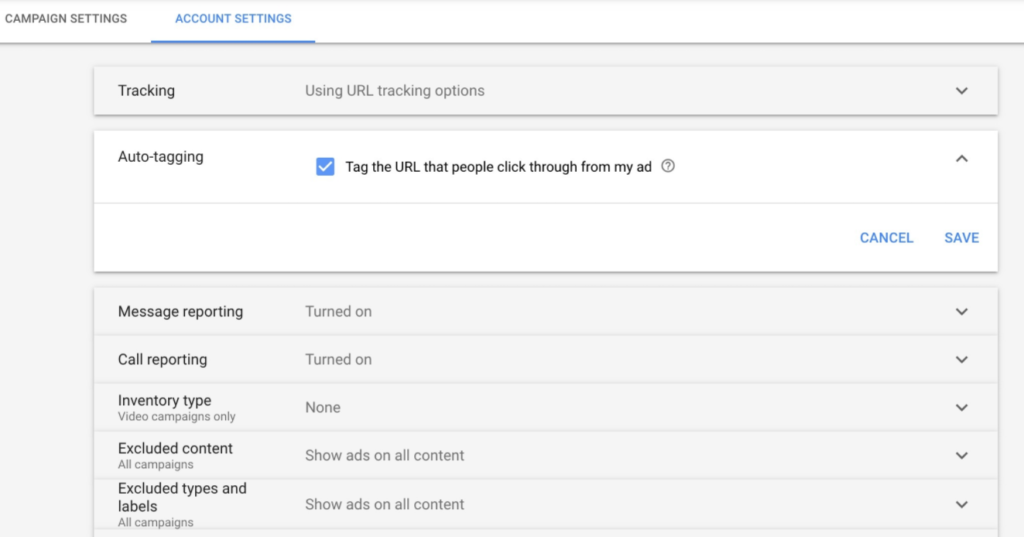Complete Guide for Writing Multi-Channel Attribution Plan

Table of Contents
Multi-channel attribution is a necessity for many marketers, especially those who work for B2B companies. At the same time, it’s hard to find a more complicated and challenging analytics task. 59% of marketers say that they don’t have an attribution model because they lack knowledge, so we’re going to help you learn everything you need to know about multi-channel attribution in this guide.
What Multi-Channel Attribution Is
Multi-channel attribution implies tracking multiple marketing channels that lead to sales and conversions. A properly planned attribution model enables marketers to consider each marketing channel’s contribution to the sales cycle and to allocate an appropriate budget to these channels. One of the main advantages of multi-channel attribution is that it gives marketers an opportunity to evaluate the success of every touchpoint of the conversion funnel. As a result, marketers can determine what channels generate more leads or bring the most profitable leads and plan their budget accordingly.
Challenges of Attribution Planning
- Attribution doesn’t reflect the online to offline effect
It’s impossible to determine the influence of offline marketing on your digital marketing channels when you don’t take into account offline media. For example, let’s consider paid search. Your paid search depends on search engine queries, and queries for a particular product or brand depend on consumers’ interest.
In turn, consumer interest is influenced not by one marketing channel but by your total marketing effort so it’s difficult to separate the impact of one channel from the indirect impact of other channels.
- Attributed ROI isn’t incremental ROI
Attribution is all about dividing credit for conversions among different touchpoints, and it’s a very difficult thing to do because customers’ decisions are influenced by numerous factors. You may attribute conversions to various marketing channels, but in reality, customers' decisions are also influenced by other factors. For example, I found out that such things as brand equity, word of mouth, promos, etc. are very important. Therefore, all the touchpoints that preceded a particular sale only have an incremental impact on top of other factors. - Attribution doesn’t take into account external factors
Attribution doesn’t let you take into account various external factors, including the overall state of the economy, pricing, seasonality, and promotions. “The impact of external factors is easy to underestimate, but they can and will have a significant influence on your attribution results,” notes Celyn Derrick, a digital marketer at popular academic writing services reviews. For example, the impact of competitive pricing may exceed the total effect of all of your advertising efforts.
So, why should you even consider multi-channel attribution? Well, it’s still a much better approach than last-touch attribution, where the whole credit for a conversion is attributed to the last touchpoint. Even if your multi-channel attribution model isn’t perfect, it’s still better than last-touch attribution. Attribution remains the only method that allows you to understand your marketing impact, and if you are aware of the challenges listed above, you can take them into account when planning multi-channel attribution.
Creating an Attribution Project in Google Analytics
When I needed to create an attribution project for the first time, I quickly realized that this task requires attention to details. It can, however, be divided into two steps, one of which is preparation. You need to create an attribution project to connect your Google Analytics account, view, property, and types of conversion.
Step 1: Preparation
First, you should link Google Analytics and Google Ads. Go to your Google Analytics account, click “Admin,” and choose the property that you want to link. In the “Property” column, choose “Google Ads Linking,” and then click “+ New link group.” Choose the necessary Google Ads accounts, and then click “Continue.” After this, you should enter the title of the link group. Make sure that linking is on for each property which Google Ads data you’re going to use.

Once your accounts are linked, you can choose or add a view that will be used for attribution. To add a view for an existing property, click “Admin” in your Google Analytics account, choose the necessary property, and then click “+ Create view” in the “View” column. You can choose a website or mobile app, enter a name, and select the reporting time zone. To ensure consistent reporting, you should also link your primary Google Analytics view to attribution. Keep in mind that you cannot use User-ID views, views on roll-up properties, and views that strip URL parameters for attribution.

You can also configure your goals and enable eCommerce tracking. After this, you should enable auto-tagging in Google Ads for all of your campaigns. In your Google Ads account, click “Settings,” then click “Account settings” > “Auto-tagging.” Check the box “Tag the URL that people click through,” and then click “Save.” You should also try to stick with standard UTM parameters for your non-Google Ads advertisements.
Step 2: Creating an Attribution Project

Click “New project,” and then click “Get started.” Go to the “Connect to your Analytics property” section, choose the account, property, and view that you’re going to connect. After this, click “Next” and then click “Select conversion types” in the “Enable conversion types” section. Once you’ve selected the necessary conversion types, click “Save” and “Complete setup.” You can calculate attributed conversions for multiple properties in one Google Analytics account and connect multiple properties to one attribution project. Google Analytics enables you to create up to 50 Attribution projects and set different user permissions for each project.
Google Analytics Attribution Models
Google Analytics offers a number of pre-installed attribution models. If you want to plan your multi-channel attribution properly, you should understand the advantages and disadvantages of each attribution model so that you can choose the right one.
- Last Interaction
This model attributes all the conversion value to the last channel visited by the prospect. This is probably the worst attribution model but it’s a standard model in many analytics tools.
“I usually start with something simple like last touch attribution models. They are relatively easy to implement and most technology tools will help you get started as this is how they attribute leads and revenue. However, relatively quickly I add complexity to that model as my technological infrastructure becomes more robust and transition it to something like a multi-touch model,” says Daniel Sims from modelo.io.
This model can only be useful if your ads attract the audience right at the point of conversion, and your sales funnel is extremely short, with no consideration period.
- Last Non-Direct Click
This model attributes all the conversion value to the last click-through channel while ignoring direct traffic. This model is used by default in all Google Analytics non-multi-channel reports, and it’s often a reason why standard reports don’t match multi-channel funnel reports.
“If you’re looking at multi-channel reports, they don’t use Last Non-Direct, instead they consider conversion paths,” explains Ed Leake from midasmedia.co.uk.
This model, however, can be considered an option if all your customers from direct sessions have already been converted by another channel.
- Last Google Ads Click
In this case, all the conversion value gets attributed to the last Google Ads click before the conversion. The disadvantages of this model are the same as those of other models that attribute all the value to a single touchpoint.
“However, if it’s a quick smaller purchase cycle (user sees ad, user clicks ad and purchases product or service), last click attribution should be used,” notes Brian Kenyon from hellodigital.co.
You can use this attribution model to determine which of your ads drive most conversions.
- First Interaction
This model attributes all the conversion value to the first channel your customers interacted with. Obviously, this is also not the best choice because you wouldn't need other interactions to get high-quality leads if the first interaction was so good.
“However, if you’re a small business with a very straight forward funnel (PPC, Landing Page, Conversion), then you’ll probably do just fine with a first click attribution method,” notes Christopher Gimmer from snappa.com.
This attribution model may also help you if your main goal is to increase awareness, and first interactions are most valuable for you.
- Linear
In this case, the conversion value is attributed equally to all interactions in the conversion funnel. This model is better than the previous models from this list, but it’s still not really useful if you want to plan your budget based on the effectiveness of different channels.
“We use a mostly Linear attribution model with some position-based weighting,” says Holly Chessman from ww2.glance.net.
You may, however, opt for this model if your objective is to maintain stable contact at every stage of the funnel.
- Time Decay
In this model, credit for conversions depends on how close a certain channel is to the conversion point. This model can be useful if your buying cycle is short. It’s much better than the previous models from this list, but you may face some difficulties if your buying cycle is very long or if you’re afraid that some channels, for example, social, will get too little credit.
“Time Decay can be deemed an ideal starting point for many. The closer the touchpoint is to conversion, the more credit it receives (and vice-versa),” explains Sam Hurley from optim-eyez.co.uk.
This attribution model is a good choice if actions that are closer to the conversion point are more valuable for you, and you can also adjust this model according to your needs.
- Position Based
This is a great choice if you value both first and last interactions but don’t want to ignore other touchpoints. By default, Google Adwords attributes 40% of the conversion value to the first and last touchpoints, and 20% to the middle interactions. A great thing about this attribution model is that you can improve the default version by changing the percentage of conversion credit attributed to different channels.
“I’m a big fan of a position-based attribution model where 40% of the credit is assigned to the first and the last interaction between the stages of “awareness” and “consideration” in an inbound strategy. All of the interactions thereafter are important as well, but those should make up 20% of the overall attribution credit,” says Jen Spencer from allbound.com.
If the first and last interactions are especially important to you, but you still want to attribute some value to other touchpoints, this model is the best choice.
How To Use Attribution Information
Once you’ve assigned value to all of your channels, you can use insights from data for decision-making. You don’t need lots of data to figure out that a certain channel doesn’t work. In contrast, decision-making requires you to analyze the data. Here are a few ways you can use attribution data to your advantage.
- Benchmarking
If you have several brands in the same market, or if you can get insights from an agency, a good decision is to compare your brand to others. The difference in performance will help you spot opportunities that you’ve lost because of an ineffective strategy. - A/B testing
A/B testing will help you track the changes in your performance depending on how much you invest in a particular channel. - Improving performance
If some of your channels don’t perform as expected, you can not only focus on other channels but also use insights from data to improve the performance of your weak channels. - Forecasting
When you know your ROI from a certain channel and how your market performance changes depending on your investments, you can forecast your future performance for more effective budgeting.
Final Thoughts
The best approach is to create and test different attribution models, adjusting them to your business goals and taking into account data. For instance, you can think of what type of behavior is most valuable for you, consider the historical data on your sales funnel, and the lifetime value of your customers.
If you’re ready to start testing different attribution models and create your own models, the best place to start is to customize the Position Based and Time Decay models. Understanding the pros and cons of different attribution models enables you to effectively track your performance data, improve your campaigns, and minimize waste.
Share this article



